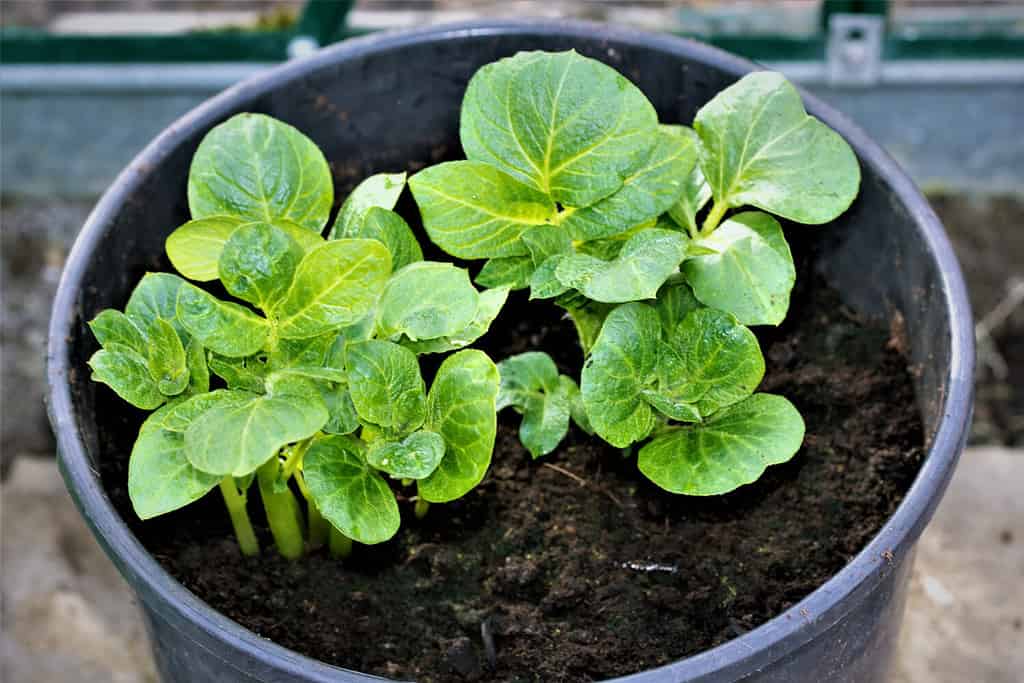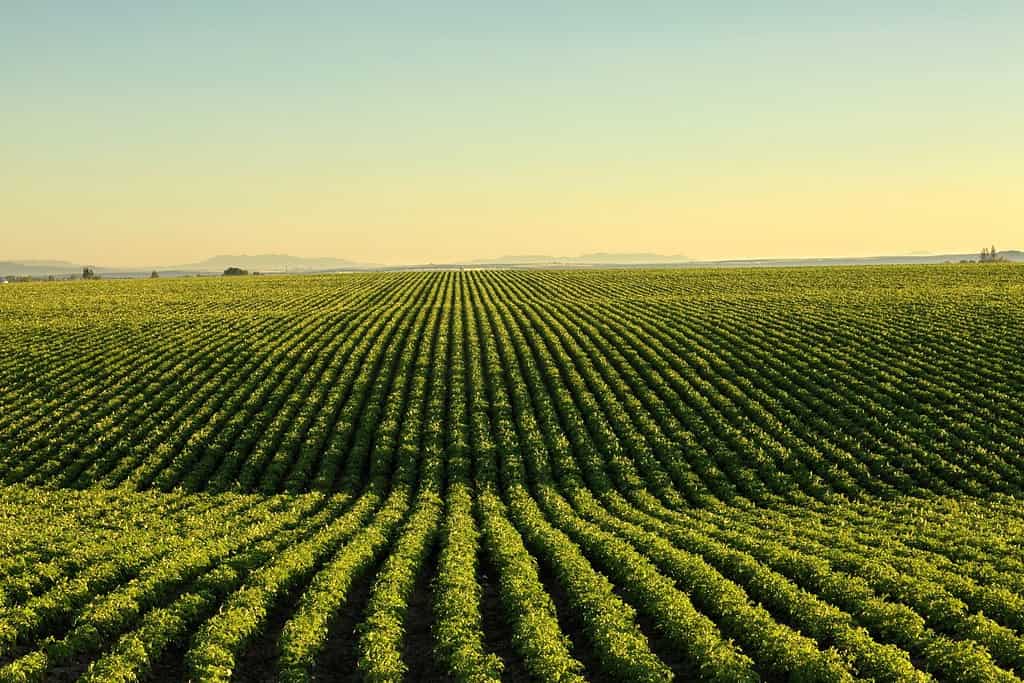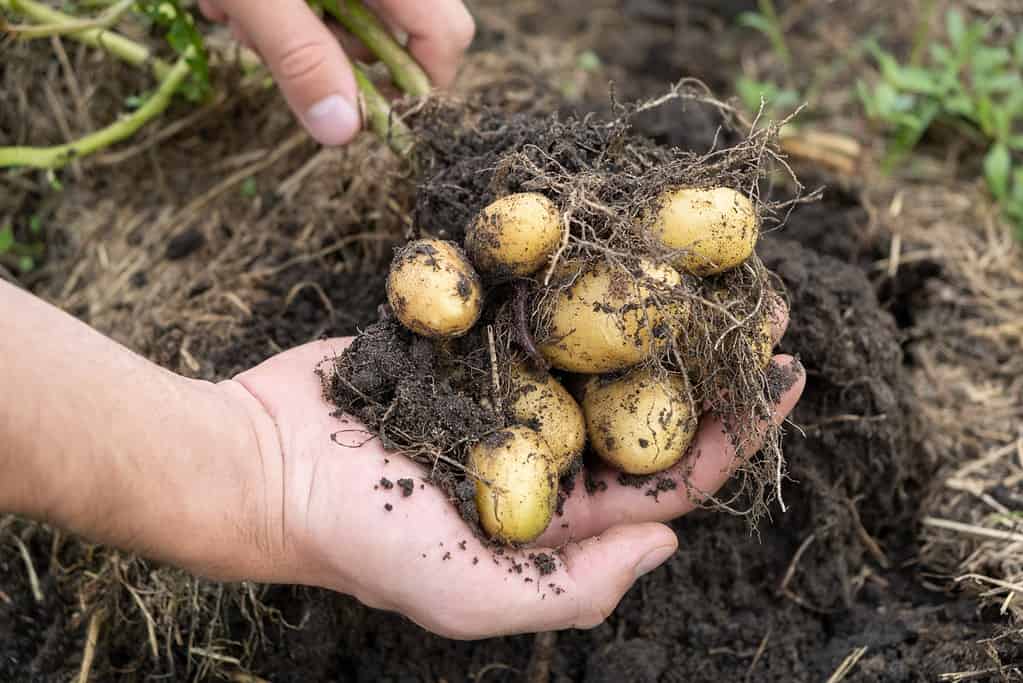Potatoes are one of the most versatile vegetables and one of the most forgiving to grow yourself. Though they take up a bit of space, they also don’t require a lot of maintenance or care once planted. Also, they provide a huge return on your investment — for every pound of seed potatoes planted, expect to harvest three to five pounds of delicious spuds! Potatoes grow best with long summer days and cooler temperatures, but growing them in warmer climates — like Texas — only takes small adjustments. Grab your garden gloves, and let’s dig into how to grow potatoes in Texas!
How to Grow Potatoes

Potatoes grow well in a variety of conditions, including in containers.
©Peter is Shaw 1991/Shutterstock.com
First things first. To understand how best to grow potatoes in Texas, let’s look at what potatoes need to thrive. The potatoes we eat are called tubers and grow completely underground. Potatoes thrive in cooler temperatures. They originated high in the Andes mountains in Peru, so they’re well-suited for high elevations and tough growing conditions. Potatoes prefer slightly acidic, loose, and well-draining soil, but the resilient tubers make do in many different conditions. They need at least six hours of sun during the growing season to get big and tasty. Potatoes also come in dozens of varieties, other than the main three or four types you see in the supermarket. They range in color, texture, taste, and harvest timing.
Planting
Unlike most plants that grow from seeds, these delicious tubers grow from small potatoes called “seed potatoes.” Most seed potatoes range from egg-sized to fist-sized and come covered in small indents called “eyes.” For the best harvest, most gardeners let their seed potatoes sprout — or “chit” — a bit in a warm, sunny spot. Green sprouts will emerge from each eye and give your potatoes a head start while growing. Larger seed potatoes can be split to maximize your harvest, but each seed potato planted should have at least three eyes on it.
Regardless of what type of potato you choose to grow, all varieties benefit from being buried. Their taste actually improves the deeper they’re grown! To manage this, most potato growers recommend “hilling” your potatoes — or moving more soil to mound up around the plant and keep all your precious tubers safe from the sunlight. Potatoes exposed to the sun turn green and become toxic thanks to a chemical called solanine. Hilling is an easy process and can be managed regardless of whether you decide to grow your potatoes in the ground or in containers.
Harvesting
Arguably, the hardest part of growing potatoes is the harvest process. They grow completely underground. How will you know when they’re ready? It depends on the variety you choose. If you decide on an early variety, these thin-skinned tubers can be harvested 60 to 80 days after planting, usually while the potato plant flowers. Mid-season varieties take 80 to 100 days to mature, while late varieties take up to 130 days to mature.
Harvest time can also be very labor-intensive. Though the soil you hilled around the plant shouldn’t be tough or compacted, it still requires time to carefully dig all your new tubers up. Early varieties can be harvested from the top down, so the nuggets are easy to find. Late and mid-season varieties are usually left to mature underground for up to two weeks after the above-ground plant dies. This results in a thicker skin for better long-term storage. However, it also makes it harder to find your potatoes! For those growing in containers, the harvest process is easier. Simply tip your container on the ground or into a wheelbarrow and sift through the dirt for your potatoes.
Growing in Texas

Potatoes are the top vegetable crop grown in the United States.
©B Brown/Shutterstock.com
Texas is a big place — the second-largest state by area. It contains six different hardiness zones as defined by the U.S. Department of Agriculture. Between the northern part of the panhandle to the southernmost tip, the growing conditions change dramatically. This also means that the time to plant potatoes fluctuates between regions.
As a rule of thumb, most potato varieties can be planted two to four weeks before the last frost date for your region. For Texas as a whole, the time to plant potatoes ranges from late December to early April. Ideally, you’ll plant your seed potatoes deep enough (four to six inches) or with enough mulch on top that the last freeze won’t kill the early shoots. Planting early will also give your plants enough time to develop before the true heat of summer stunts their growth.
When to Plant Potatoes in Texas

Potatoes grow from smaller seed potatoes.
©FotoDuets/Shutterstock.com
The ideal timing to plant potatoes depends greatly on the weather and conditions where you live. In South Texas, be ready to plant as early as the last week of December through late January. Central Texas’ ideal timing ranges from early February to late March. Gardeners living on the eastern side of the state can plant a little earlier than those to the west. For North Texas, where winter lingers a bit longer, aim to plant your potatoes anytime between late February to mid-April.
Garden timing can feel like a guess in the dark, but hopefully, this guide has helped that guess feel a little more targeted! Keep reading for seven more useful potato-growing tips.
7 Important Tips for Growing Potatoes in Texas

Potatoes are easy and low-maintenance to grow, making them extra rewarding in the garden.
©ArieStudio/Shutterstock.com
- Choose carefully. There are over 100 different varieties of potatoes to choose from! Selecting the right variety is important: popular varieties in Texas include red Pontiacs and LaSodas, white Kennebecs, and yellow Yukon Golds.
- Fertilize! Amending your soil with nutrient-dense compost or manure will help your potatoes thrive. For late-season potatoes, a slow-release fertilizer added to your hilling soil will ensure a big harvest.
- Water, water, water. Potatoes need a good bit of water to reach their full potential. Make sure to water frequently, especially as that Texas summer heat rolls in. However, make sure your tubers aren’t swimming — well-draining soil is just as important.
- Consider shade. Though potatoes need at least six hours of sun to grow their best, harsh afternoon sun can still roast the plant. If you notice your plants getting scalded, consider adding a shade plant or cloth shade to protect it.
- Mark your calendar. With a crop like potatoes, it can be hard to monitor how they’re doing. So check your potato variety, write down the date you planted them, and estimate your harvest window. This can take some of the guesswork out of harvesting.
- Hill your potatoes in the morning. This is when your plants will stand their tallest, so you won’t risk covering any leaves. Also, you’ll protect any potatoes peaking through the soil from the day’s sun.
- Check regularly for problems. Catching any problems early on makes it easier to fix. Potato plants are subject to aphids, potato bugs, and both early and late blight. Monitor your plants carefully to catch any problems before they impact the health of your plants.
- Plant companions. To reduce the use of chemical pesticides and increase harvests, consider planting other beneficial plants near your potatoes, like garlic and onions, beans, thyme, nasturtiums, and others.
Thank you for reading! Have some feedback for us? Contact the AZ Animals editorial team.








